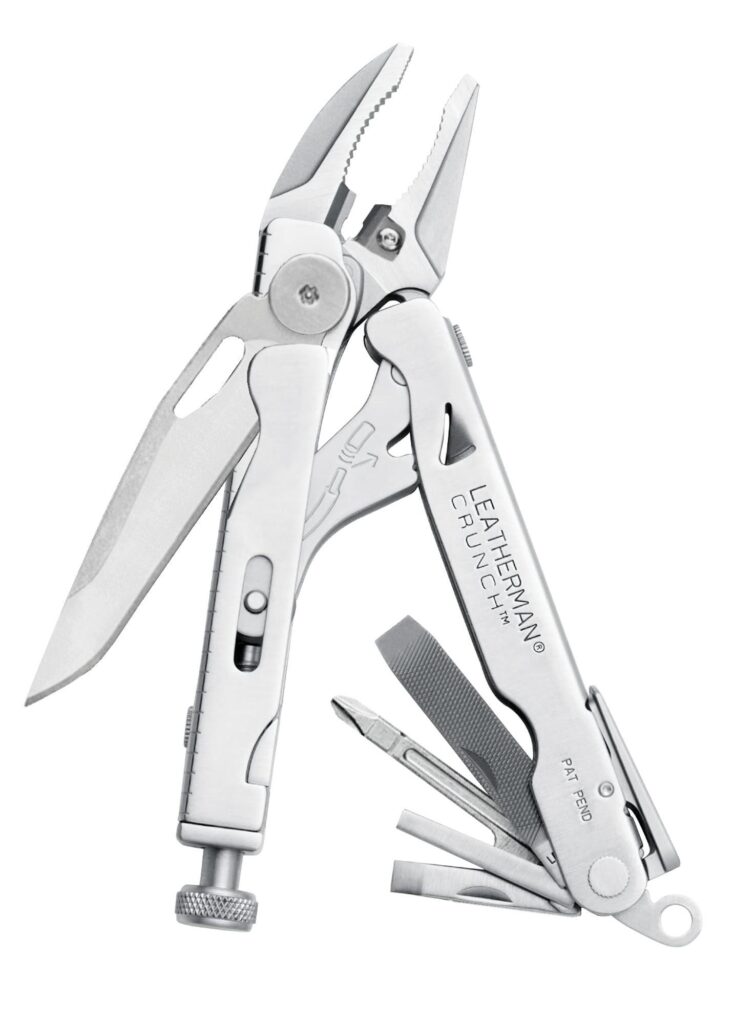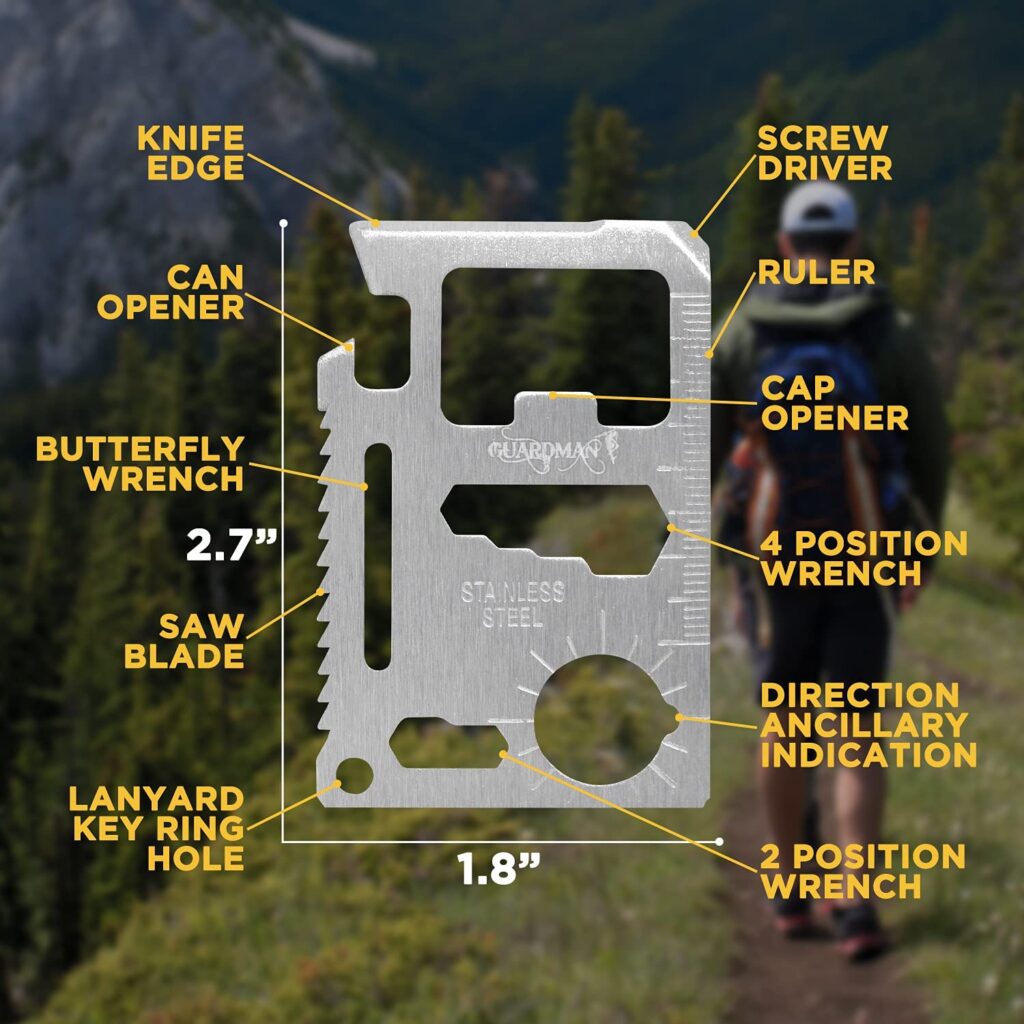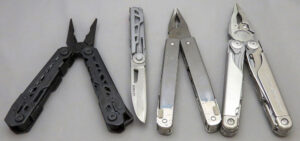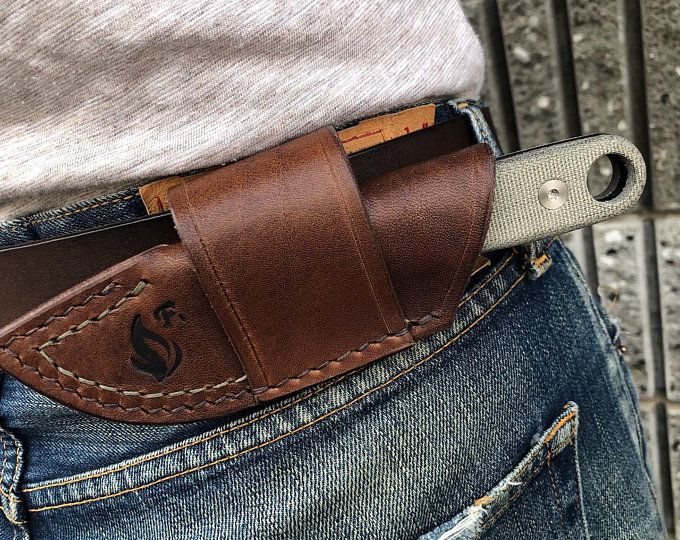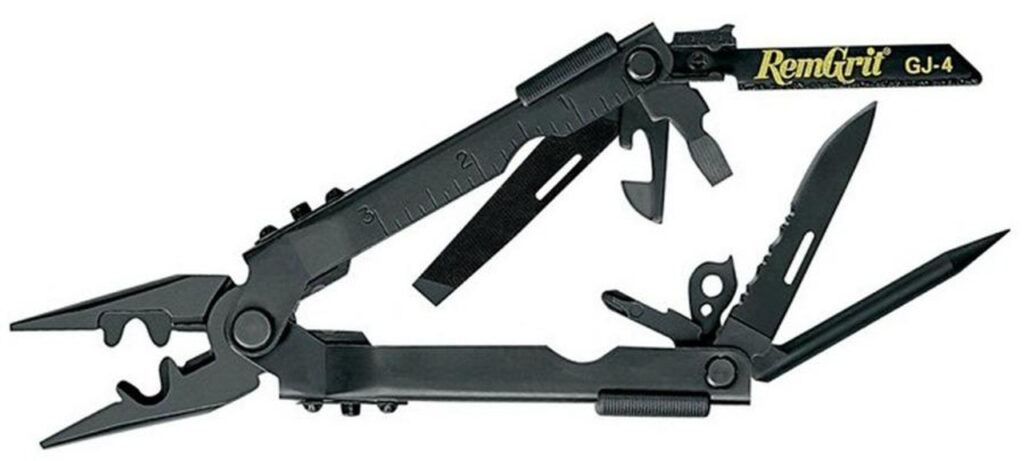
Disclosure: When you buy something using the links on the site, we may earn a small commission at no additional cost to you.
Do you have a Gerber multi tool similar to the one above and having trouble opening it. This guide will show you how to open a Gerber Multi Tool. The two main methods to open pliers in a multitool are folding or sliding. You can also there the advantages and disadvantages of the these two main opening methods and decide which may be better for you. We will also briefly discuss a few of the other multitool opening styles on a few other brands. So let’s get to it.
The Original Folding Pliers
The folding designs, like the Leatherman PST, first seen in 1983, incorporated a hinge at the end of each handle. This enabled the handles to fold back over the pliers when they are not in use. The remaining space is utilized to accommodate other folding tools that pivot from the opposite end of the handles when required.
Gerber’s Sliding Pliers
Instead of using a folding mechanism, Gerber came up with a unique sliding design and got it patented. They did not have a handle pivot on the pliers, but the handles of the Multi-Plier meet at a single pivot point and the pliers slide out independently. They also engage a locking mechanism, ensuring that the pivot of the pliers aligns with the pivot of the handle. Similar to folding multitools, the space behind the pliers is utilized for storing additional folding tools.
See below diagram on how to open the sliding pliers:

Advantages/Disadvantages of Gerber’s Opening Styles
The folding and sliding designs both accomplished the same goal: creating a compact pocket tool that conveniently deploys pliers for various tasks. While each design has its own advantages and disadvantages.
The Gerber Multi-Plier is easily recognizable for its flick deployment. The sliding mechanism allows the item to only lock when open, unlike some other tools. This allows the pliers to slide out and lock in place with a simple flick of the wrist.
With a unique folding design, the handles separate and rotate fully, locking each pivot independently. This allows for one-handed deployment simular to a butterfly knife, it’s not as quick or effortless as the sliding system used by the Multi-Plier.
Now, let’s address the elephant in the room: the palm pinch. Due to a design limitation, the handles of the original Multi-Plier remain closed after deploying the pliers. This may seem like a harmless quirk, but it can lead to the pliers slipping and pinching your flesh as the handles close on your palm.
Another quirk is the necessary loose tolerance between the pliers and handles for smooth deployment. This results in an unwelcome rattling noise that bothers many users. This also creates some play when the pliers are deployed. However, don’t let the rattling fool you. The Multi-Plier is incredibly durable and often referred to as the AK-47 of multitools.
So, is flicking better? There’s no denying the strength of the design, the comfort of the rounded handles, the satisfying fiddle-factor, or the almost instinctive speed of deployment. Personally, I appreciate the original blunt nose design that neatly tucks away in the handles. It feels sturdy and inspires confidence, with many users praising its ability to withstand years of abuse.
Other Opening Styles
In the 90s, there were also some unconventional folding designs that featured a 90-degree angle, such as Schrade’s Tough Tool and SOG’s ParaTool. Bear MCG took a different approach by flipping the handles to avoid any sharp edges when opening their Bear Jaws multitool to use the pliers. This innovation allowed for outside tool opening years before the Victorinox SwissTool or Leatherman Wave were introduced with the same feature.
Conclusion
We hope this brief guide allowed you to learn how to open a Gerber Multi Tool. You now know the two main methods to open pliers in a multitool which are folding and sliding. You also learned some of the advantages and disadvantages of the these two main opening methods. If you are interested in purchasing a new or used multitool be sure to check out the links below:
YoloToolWorks on eBay
Pocket Knives on Amazon
Contact us if you have any questions or need any further information.
Other Articles
- How to Easily Open a Gerber Multi Tool
- What is an EOD Multi Tool?
- What are Locking Pliers in a Multi Tool?
- What is a Multi Tool Bracelet?
- What is a Credit Card Multi Tool?
- Learn the Many Uses of a Multi-Tool?
- Types of Pocket Knife Blades Explained!
- 39 Ways to use your Awl (some) Tool
- How to Open a Can Without a Can Opener
- Why Carry a Pocket Knife (101 Reasons)



